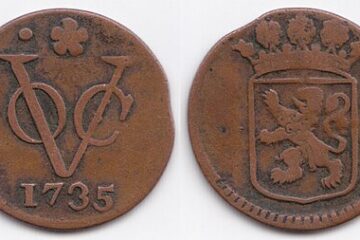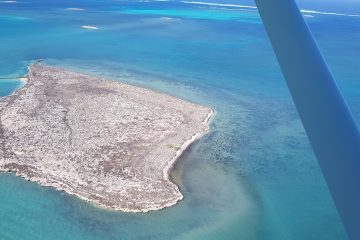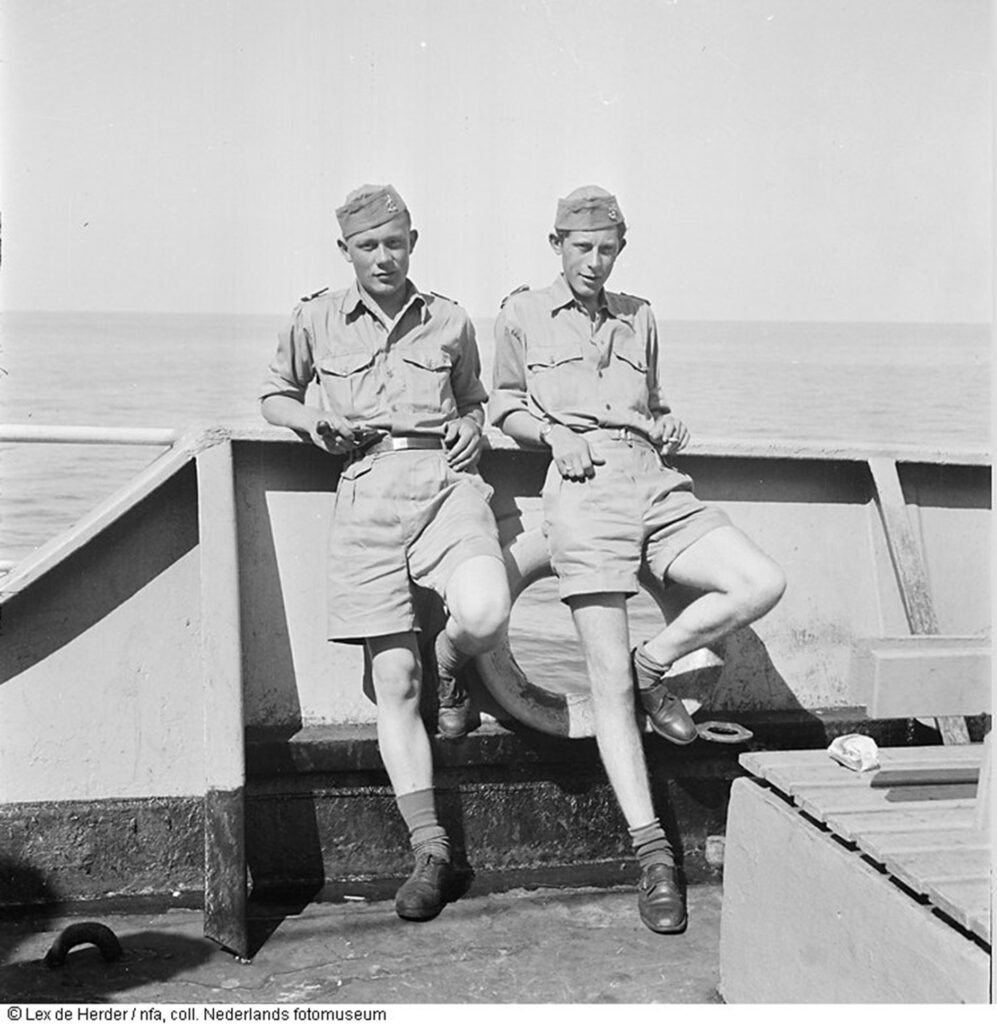
The SS Waterman, initially constructed as the enlarged Victory troopship SS La Grande Victory (VC2-S-AP3), holds a notable place in maritime history. Post-World War II, the State of the Netherlands procured three ships from the US War Shipping Administration, and the SS Waterman was one of them. Designed with reinforced hulls for wartime conditions, this vessel, unlike Liberty ships, boasted accommodations that were both ventilated and heated, rendering it suitable for the transportation of approximately 1,600 men.
After a brief period under the American flag with Shepard Steamship Co., the SS Waterman was laid up for sale in 1946. In 1947, the State of the Netherlands acquired the ship and entrusted its management to Koninklijke Rotterdamsche Lloyd, deploying it as a troop transport ship to the Dutch East Indies and later to New Guinea, facilitating the return journey for servicemen.
A transformative phase occurred in 1951 when the Nederlandsche Dok en Scheepsbouw Maatschappij in Amsterdam converted the ship into an emigrant vessel. This involved adding an extra deck, repositioning and elevating the bridge forward, and adapting accommodations for 831 passengers. The ship’s tonnage increased from 7,606 to 9,177 GRT. In November 1951, it embarked on its maiden voyage to Australia.
Management transitioned to NASM (Holland-America Line) in Rotterdam in 1952. The SS Waterman, now under the flag of the Holland-Africa Line, embarked on voyages to Cape Town, Walvis Bay, and Halifax in 1952.
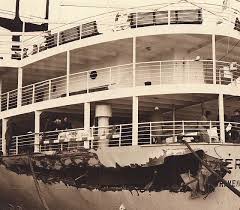
In a dramatic turn, on March 14, 1957, at 7:17 a.m. ship’s time, the SS Waterman collided with the 7,174-ton Italian ship SS Merit in the middle of the Atlantic Ocean.
By 1961, the ship was transferred to Scheepvaartmij. Trans-Ocean in The Hague, while the operation continued with NASM. In response to declining emigrant numbers, passenger accommodations were converted into luxury tourist-class facilities. The ship continued transoceanic voyages to Australia and New Zealand. In 1962, it was chartered alongside the Groote Beer for accommodations during the Commonwealth Games in Fremantle, Australia.
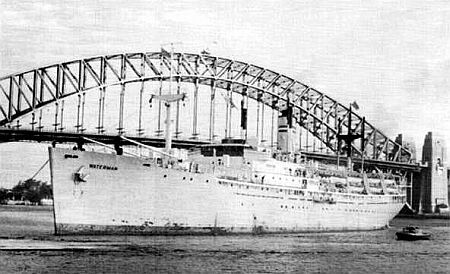
In January 1963, the SS Waterman, now known as the Aquarius, embarked on its final voyage to Australia and New Zealand. Later that year, it changed hands, purchased by the Greek family business of John Latsis, and was renamed Margarita. The ship transitioned to voyages in the eastern Mediterranean, transporting pilgrims to Jeddah during the pilgrimage season. However, at the close of 1969, it was sold to Onomichi, Japan, marking the end of its seafaring journey, as it was destined for scrapping. Source: Wikipedia
Passenger Stories
The Janssen Verheul family
The Janssen Verheul family emigrated from Holland July, 1960. “We drove by taxi from Amsterdam to Rotterdam to board the ship SS Waterman. Sailing was an adventure for us children; dining three times a day, exploring the ship, and the sea. Heavy seas could have washed us overboard, the crew locked the access after we three unsupervised kids came in. After a week we had to exit the ship at midnight at Halifax, then back on to Montreal. A train took us to Chatham where Rita and Ted Verheul took us in.” More info
Linda Rien Devos
Arrived Sydney, Australia May 1960. on the SS Waterman. Mum, Dad and 11 children.

Arno van der Plaat
“Our family asembled on the docks in Rotterdam on the morning of the 14th of November 1951 as we had been staying with relatives for the last two weeks, after the good byes we went on board the SS Waterman and were allocated our lodgings, Mum and the youngest child share a cabin with another mother and child but we Dad and the boys were in a large dormitory for Males with triple high bunks with space for luggage under the bunks but other then that everything was high class, a dining room with three sittings a day we had never been so spoiled. entertainment we made between us and awe had a Saint Nikolaas feest and others as the conditions allowed, frankly it was perfect, we enjoyed it
Arriving in Sydney on December 1951, we were then transferred to the Bathurst Migrant Reception Center, which, despite its fancy name, was a challenging experience. Nonetheless, we endured for five weeks, even celebrating Christmas during our stay. Our family consisted of seven members: our parents and five sons.
Towards the end of January, on my 16th birthday, my father, older brother, and I were sent to work on a rural property near Cooma, NSW. Meanwhile, my mother and the remaining three children stayed in the camp until Easter when it closed down. Now (2024), seventy-two years later, we still reside in the same area.
Additionally, I have chronicled our family’s journey in several volumes, detailing our immigration, reasons for immigrating, arrival in Australia, and our experiences in the country over the years.”
Verbeek Family
Gerritje (Gerda) Verbeek just completed the ‘Equator Dip’ crossing the Equator on board the SS Waterman en route to Australia with her parents Jan and Anna and brother George in 1951.
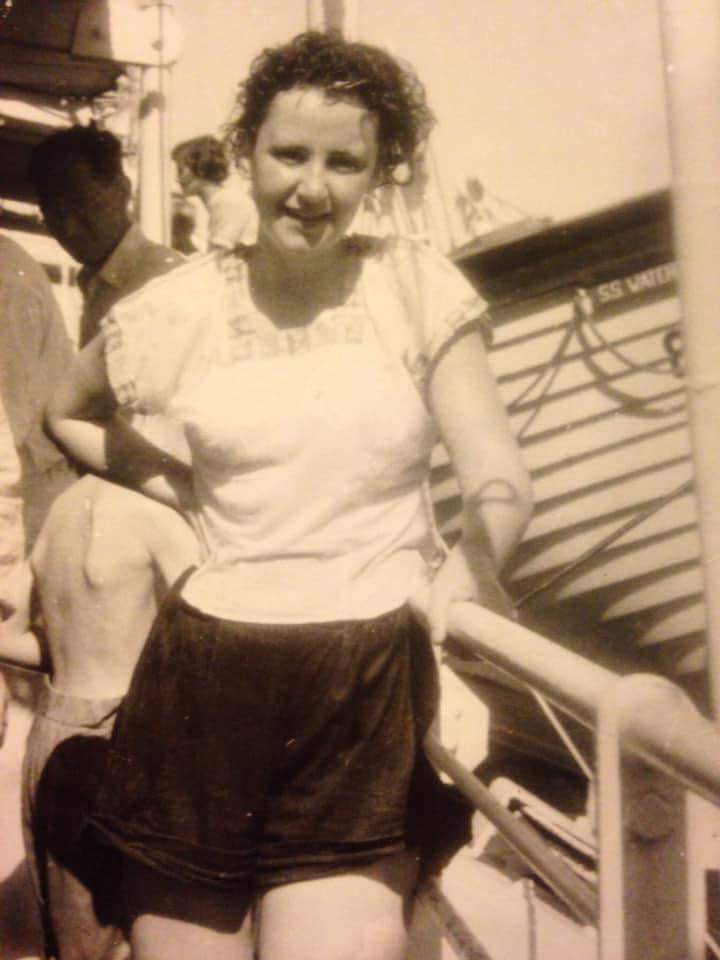
Martina Oprey
Martina Oprey emigrated to Australia on the SS Waterman in 1961. She shared her memories of the migration journey, captured in journal entries, with us in 2024. See the PDF “Going to Australia” below.
See also:

